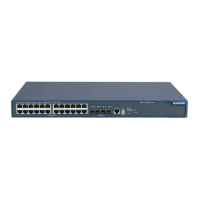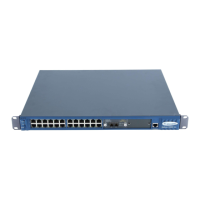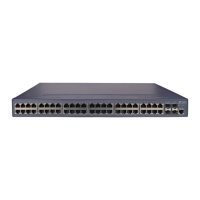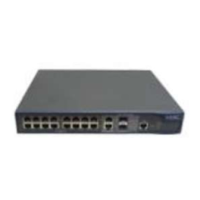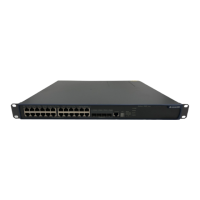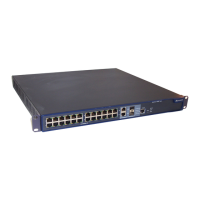Operation Manual – MAC Address Table
Quidway S3900 Series Ethernet Switches-Release 1510 Chapter 1
MAC Address Table Management
Huawei Technologies Proprietary
1-1
Chapter 1 MAC Address Table Management
Note:
This chapter describes the management of static, dynamic, and blackhole MAC
address entries. For information about the management of multicast MAC address
entries, refer to the section related to multicast protocol in Quidway S3900 Series
Ethernet Switches Operation Manual.
1.1 Overview
1.1.1 Introduction to MAC Address Learning
An Ethernet switch maintains a MAC address table to forward packets quickly. A MAC
address table is a port-based Layer 2 address table. It is the base for Ethernet switch to
perform Layer 2 packet forwarding. Each entry in a MAC address table contains the
following fields:
z Destination MAC address
z ID of the VLAN which a port belongs to.
z Forwarding port number.
Upon receiving a packet, a switch queries its MAC address table for the forwarding port
number according to the destination MAC address carried in the packet and then
forwards the packet through the port.
The dynamic address entries (not configured manually) in the MAC address table are
learned by the Ethernet switch. When an Ethernet switch learns a MAC address, the
following occurs:
When a switch receives a packet from one of its ports (referred to as Port 1), the switch
extracts the source MAC address (referred to as MAC-SOURCE) of the packet and
considers that the packets destined for MAC-SOURCE can be forwarded through Port
1.
z If the MAC address table already contains MAC-SOURCE, the switch updates the
corresponding MAC address entry.
z If MAC-SOURCE does not exist in the MAC address table, the switch adds
MAC-SOURCE and Port 1 as a new MAC address entry to the MAC address
table.

